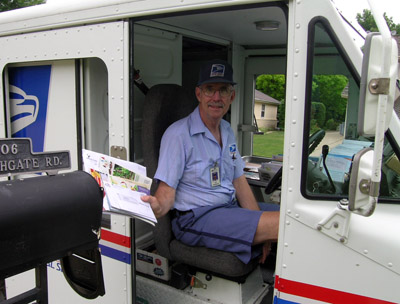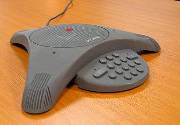When my dad, Joel Summers, began working at the U. S. Post Office in Peoria in 1965, a stamp only cost five cents, the mail was hand-sorted, and a letter carrier was known as a “postman” or “mailman” because that’s what they were at that time — all men. Now a stamp costs 41 cents, the mail is largely sorted by machine, and many letter carriers and most of the supervisors are women. On Saturday, June 2, Mr. Summers cleaned out his locker and punched out for the last time, completing 41 years and 11 months of service with the post office. He plans to stay in Peoria for his retirement.
Things were different then
Like most new employees of the post office in 1965, Dad started as a “sub,” filling in for the “regulars.” The post office was then located in what’s known now as the Federal Building at Main and Monroe. Soon after starting, he moved to the parcel post area. Ever heard of parcel post? If you’re my age or younger, I bet you haven’t. Today, all the letter carriers have their own trucks and all the mail is delivered at the same time once a day, but it wasn’t always that way.
In 1965, letter carriers would start their day by sorting the mail so it was in the right order for delivery. Then they would load it into three or so mailbags. The carrier would then ride the bus (yes, the bus!) to his appointed route carrying the first mailbag with him. The mailbag got him on the bus for free. Since carriers were on foot and had no truck, they only carried letters and flats (e.g., magazines), but no parcels. The parcels were delivered to homes separately by parcel post carriers, who were the only ones with trucks.
In addition to delivering parcels, the parcel post drivers would also deliver the rest of the carriers’ mail to them by leaving the extra mailbags in what were called “relay boxes.” Relay boxes looked just like big mailboxes you’d see on a street corner, only there was no slot for putting the mail in, and they were painted green instead of red and blue. After a carrier finished delivering his first bag of mail, he would go to the relay box and open it with his key to retrieve the next bag of mail that was left there by a parcel post driver.
So, my dad would deliver mailbags to relay boxes in the morning, and large packages (parcels) to businesses and residences in the afternoon. He did that until he became a “regular” and was able to bid on a route and become a letter carrier. His first route was in the East Bluff, delivering to homes on McClure, Arcadia, and the surrounding area. He had that route for about two years. At that same time (about 1968), the post office did away with parcel post deliveries and went to the current system of each carrier having his own truck and delivering letters and parcels together.
Finding a wife and a home through work
Shortly before he got his first route, my dad met a girl named Lorena Roberson who was working at the post office as a clerk. Three months after their first date, they got married on December 30, 1967, and they’ve been married ever since. I came along about two and a half years later. My mom quit the post office immediately after getting married to take care of her new family (my dad had a four-year-old son from a previous marriage, so my mom was not only a new wife, but a new mommy, too).
At the end of 1970, Dad got a new route delivering mail in a neighborhood called Sherwood Forest on what was then the edge of town — off War Memorial Drive just north of where the Glen Hollow shopping center is today. It was while he was delivering that route in 1971 that he found the house on Big Hollow Road where I grew up and my parents still live today. He carried that walking route — through rain, snow, heat, and gloom of night — for 22 years before finally getting a “mounted route” (meaning he could just drive up to the mailboxes instead of having to walk up to each house) in the Edgewild subdivision off north Knoxville fourteen and a half years ago.
Vehicles and uniforms are different now
Some of the changes I’ve noticed through the years: Dad’s mail truck used to be a Jeep with the steering wheel on the right side — that was the best-looking mail truck the post office ever had. Now they drive a Grumman Long-Life Vehicle, or “LLV” for short. That’s the vehicle you see in the picture above.
The uniform has changed significantly, too. When I was growing up, Dad wore a hat with a badge on it that made him look like a policeman (at the time), a necktie, polished leather shoes, and a chain with lots of keys on it connected to his belt. His shirt was always pressed and tucked in, and he looked very spiffy. Today, the uniform standards have really gone to pot. The hat has been replaced with a ball cap, the leather shoes have been replaced with black tennis shoes, no tie is required anymore, and many of the letter carriers I see walking around town don’t even tuck in their shirt, which looks pretty sloppy, if you ask me.
A faithful worker
When my dad started working at the post office, I mentioned that he worked at the building at Main and Monroe. After that, he worked at the “annex” which is right next to Kelleher’s today. Then he worked at the West Glen station for a long time — that’s at Glen and Sheridan next to the Red Carpet Car Wash. When he worked at that station, he would ride his bike to work. One morning, his hat started to fly off as he was coming down the hill toward the station. As he reached up to catch it, he applied the front brakes too hard and tumbled over the handlebars of his bike and was quite a mess. He came into work bleeding yet tried to convince them he would be alright and could work. As it turned out, he had to get stitches in his upper lip.
But that’s the kind of worker he was. He very, very rarely called in sick, and the post office lets you accumulate your sick time from year to year up to, I believe, a year’s-worth of sick time. He had that much in reserve because he was always there; he had to be practically on his death bed to call in sick. He worked a lot of overtime, a lot of days off. But he wasn’t all work and no play. He took four weeks of vacation every June and would take the family on vacation. Those were a lot of fun. Although my behavior on a certain trip to Florida when I was three convinced him not to have any more children, so I guess they weren’t all as much fun for him. 🙂
The future
Since he always took most of June off for vacation anyway, things don’t seem too different right now for Dad. But when July rolls around, he says it will probably start to sink in, since he won’t be going back. He doesn’t have any big plans for retirement. He’s not moving to Florida or Arizona. He’s not buying an RV and roaming the country. My parents will spend more time with their grandkids (they see my kids often enough, but their other grandkids — my nieces and nephews — live in Ohio), work on their garden, visit friends, travel, and just do what they enjoy. Dad says he’s going to play it by ear.
I think he’s earned it. Congratulations on your retirement, Dad.


 Another big change that’s on the council agenda for Tuesday night is an amendment that would allow council members to
Another big change that’s on the council agenda for Tuesday night is an amendment that would allow council members to